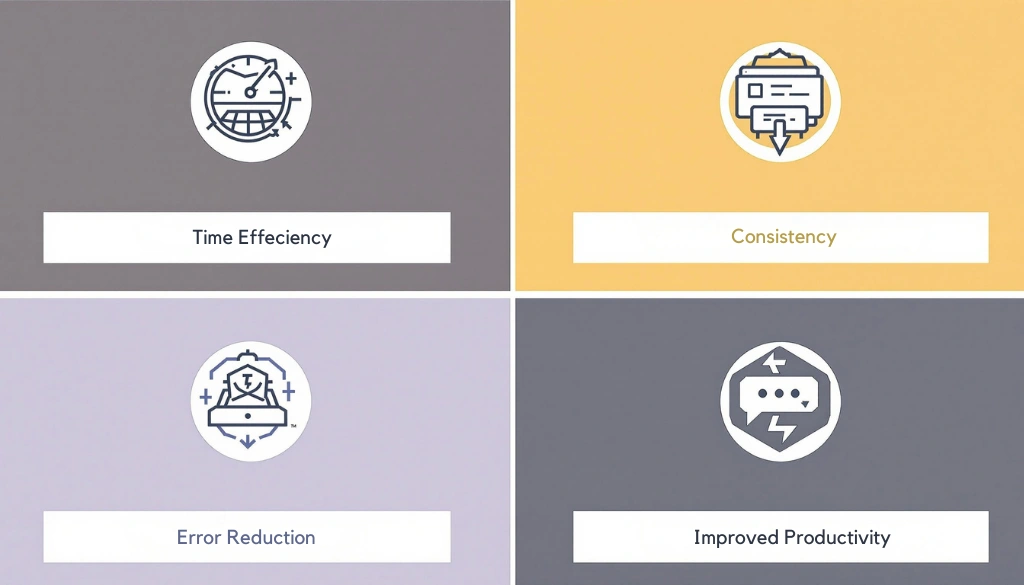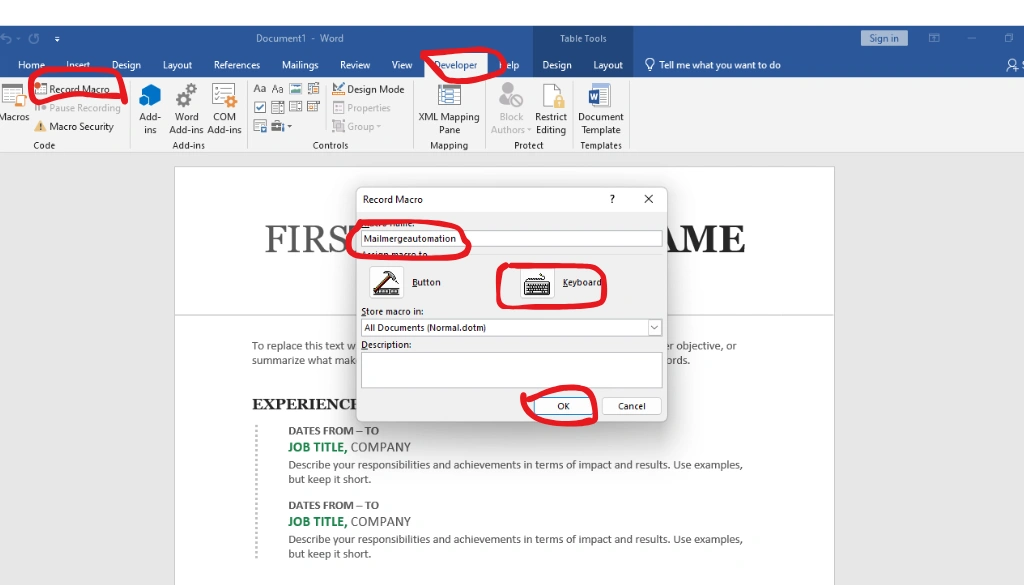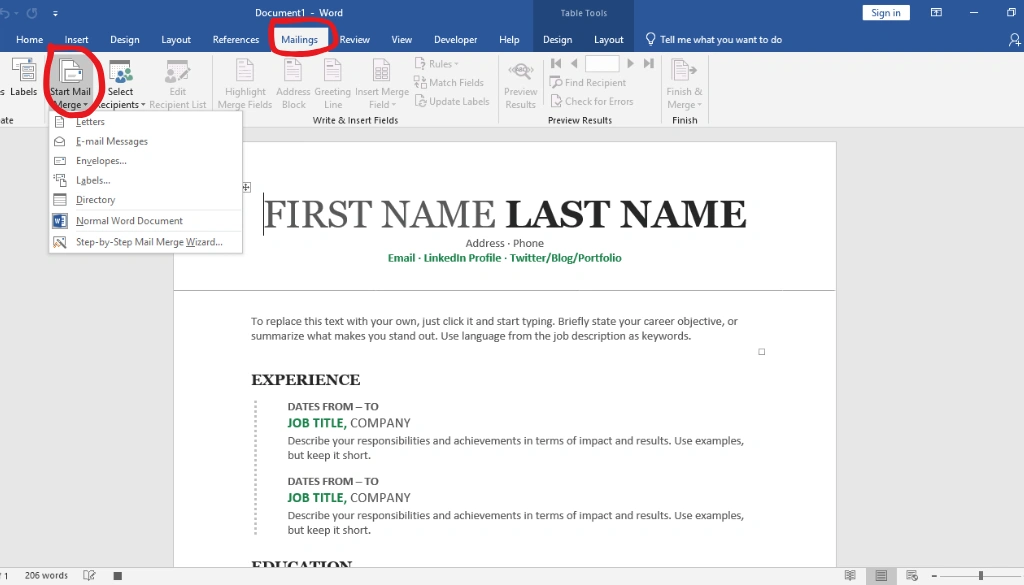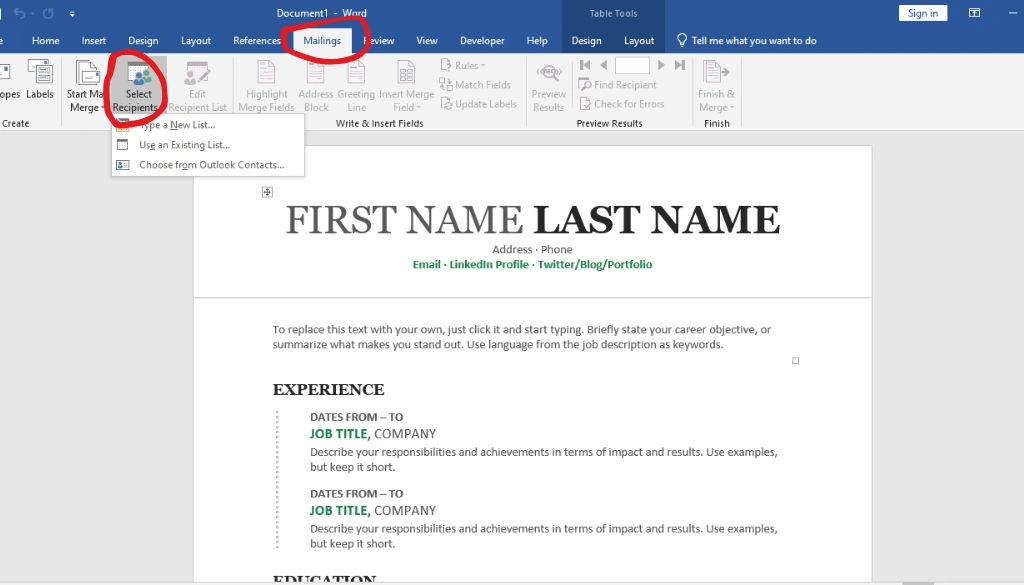Last Updated: August 8, 2025
Do you find yourself repeatedly sending personalized letters or emails using the same template? This process can be exhausting, but thankfully, MS Word offers an amazing feature called Mail Merge. With macros, you can take this process a step further—saving you even more time by automating everything from start to finish.
In this blog, we’ll show you how to automate the Mail Merge process with macros in MS Word. This will help you save hours of repetitive work and let you focus on the bigger picture. Whether you’re handling a marketing campaign, sending invoices, or sending personalized newsletters, automating the Mail Merge process can make your tasks easier, faster, and more consistent.
Table Of Contents
What is Mail Merge?
Before diving into the automation part, let’s cover the basics. Mail Merge is a powerful feature in MS Word that allows you to send personalized letters, emails, or labels to many recipients without having to create individual documents. Essentially, it pulls information from a data source, such as Excel, and places it into a Word template, saving you from the tedious task of manual customization.
Combining Mail Merge with macros creates a seamless process that combines personalization with bulk automation. This is particularly useful for marketers, HR teams, sales professionals, and anyone needing personalized communication on a large scale.
Benefits of Automating the Mail Merge Process with Macros

- Time Efficiency: By automating Mail Merge, you eliminate the need for manual input, which saves you hours on each campaign.
- Consistency: Automation ensures that each letter is personalized correctly, without missing any crucial details.
- Error Reduction: Since the process is automated, the likelihood of errors is reduced, which is essential when dealing with multiple recipients.
- Improved Productivity: Automation means you can create hundreds of documents or emails while focusing on other important tasks.
Step-by-Step Guide: Automating Mail Merge with Macros in MS Word
1. Recording Your Macro for Mail Merge

First, you’ll need to record the macro that will handle your Mail Merge. This step allows MS Word to capture the actions you take and save them so they can be used again and again.
- Open MS Word and make sure your Mail Merge template is ready to use.
- Go to the View tab, then click on Macros > Record Macro.
- Name your macro something easy to remember, such as “MailMergeAutomation”.
- Choose whether you want to assign it to a button or keyboard shortcut to access it easily in the future.
Now that you’ve started recording, it’s time to begin setting up your Mail Merge.
2. Setting Up the Mail Merge



- Go to the Mailings tab and select Start Mail Merge. Choose your document type, such as Letters or Emails.
- Click on Select Recipients and either choose Use an Existing List (like an Excel spreadsheet) or manually enter the information.
- Add Merge Fields to your document—these are placeholders for personalized details like name, address, or email.
- Once you’ve inserted all the necessary fields, click on Finish & Merge to complete the process.
The macro is recording all these actions, allowing you to perform this whole setup again with a single click in the future.
3. Assigning Your Macro for Future Use
To make your macro easily accessible, consider assigning it to a button or a keyboard shortcut:
- Go to File > Options > Customize Ribbon.
- Click on Customize beside the “Keyboard shortcuts” section.
- Assign a key combination or add a button to your toolbar for the recorded macro. Assigning a key combination or button makes it easier and faster to run your macro whenever needed.
This means that next time you need to run a Mail Merge, you can do it by just pressing a button—no need to go through the process manually.
4. Editing the Macro with VBA for Extra Customization
You can also edit the recorded macro using VBA (Visual Basic for Applications) to make additional adjustments that weren’t recorded initially. For instance, you might want to set conditions like only sending emails to recipients in a specific region or ensuring that fields with missing data aren’t used.
- Press Alt + F11 to open the VBA editor.
- Find your macro in the “Modules” section and make any necessary changes to fine-tune your automation.
- For more customization, you can learn more about mastering the VBA editor in MS Word.
5. Running the Automated Mail Merge
Now that your macro is all set, running the Mail Merge is as easy as hitting the shortcut key or button you assigned. The macro will execute all of the recorded steps, automatically pulling in the recipient information, adding personalized details, and merging the document.
With just one click, your Mail Merge process can go from manual drudgery to a fully automated workflow, for example, sending 500 personalized emails in minutes.
Common Questions About Automating Mail Merge with Macros
1. Can beginners use macros to automate Mail Merge?
Absolutely! Recording macros in MS Word is simple, and even beginners can do it without programming knowledge. Macros are recorded by simply following the usual steps, and MS Word does the rest.
2. What if I need to make changes to my data or template?
If you need to make changes, simply update your data source (e.g., Excel) or adjust the fields in the Word template. The macro will continue to run smoothly since it relies on the template structure, which you can always update.
3. Can I send emails using the automated Mail Merge?
Yes, macros can automate email merges as well. Simply select E-mail Messages under the Start Mail Merge options and follow the steps while recording your macro. The macro will handle it all—from connecting to the data source to sending out personalized emails.
4. How do I troubleshoot errors in my macro?
You can troubleshoot macro errors by editing the macro in the VBA editor. If you’re new to VBA, you can also refer to how to troubleshoot macro errors in MS Word for helpful tips.
5. Is Mail Merge automation secure?
Macros are safe to use, but it’s important to have proper security settings. Make sure your macro security level is set appropriately, and only run macros from trusted sources. For more information, check out how to set up security settings for macros in MS Word.
Why Should You Automate Mail Merge with Macros?
1. Save Time
Automating the Mail Merge process can save you hours that would otherwise be spent preparing personalized documents. With macros, you can complete tasks that used to take hours in just minutes.
2. Increase Accuracy
Manual entry is prone to errors, especially when dealing with large datasets. Automating with macros minimizes the risk of mistakes, ensuring that your documents are consistently accurate.
3. Improve Productivity
With the Mail Merge process fully automated, your productivity will skyrocket. You can spend your time on more valuable activities instead of getting bogged down by repetitive tasks.
4. Scalability
Mail Merge macros make it easy to scale your operations. Whether you’re sending out 10 or 10,000 letters, automation means you can handle larger tasks without any extra manual labor.
Conclusion
Automating the Mail Merge process with macros is an effective way to save time and boost efficiency. Whether you’re creating newsletters, invoices, or personalized invitations, automation makes everything easier. By following the steps outlined in this guide, you can record macros, assign shortcuts, and even use VBA to customize your automation. For more information, check out the official Microsoft documentation on Mail Merge.
Ready to automate your Mail Merge process and take productivity to the next level? Start by recording a simple macro today, and soon you’ll be handling bulk communications with ease. Say goodbye to repetitive work, and let MS Word do the heavy lifting for you!




